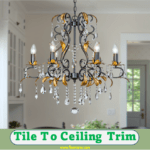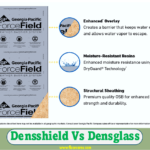Foam Board On Interior Ceiling: Foam board is commonly used for insulating interior ceilings, providing thermal protection and reducing energy costs. It’s also an effective way to soundproof and add structural support to the ceiling.
Many homeowners in Austin, Texas, United States use foam board to enhance the interior of their homes, as it is affordable and easy to install. Whether it’s for a garage, attic, or living space, foam board on an interior ceiling can offer numerous benefits.
Foam board is a versatile option for reducing heat loss and creating a more comfortable indoor environment. Additionally, with a variety of foam board products available on the market, homeowners have the flexibility to choose the most suitable option for their specific needs.
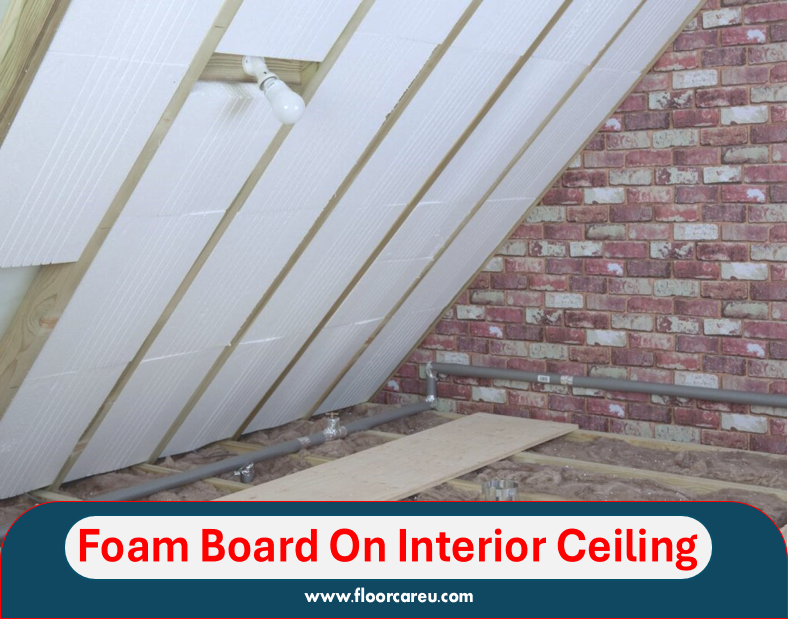
Types Of Foam Board Insulation
When it comes to insulation, foam board is a popular choice for interior ceilings due to its lightweight and easy-to-install properties. Various types of foam board insulation options are available, each with unique features and benefits.
Extruded Polystyrene (XPS)
Extruded Polystyrene (XPS) is a closed-cell foam insulation known for its high compressive strength, moisture resistance, and thermal performance. It is commonly used in applications requiring high moisture resistance, making it suitable for interior ceiling installations in areas prone to dampness.
Expanded Polystyrene (eps)
Expanded Polystyrene (EPS) insulation, also known as beadboard, is a versatile option suitable for various interior ceiling applications. It is lightweight, easy to handle, and provides excellent thermal insulation. Additionally, EPS is cost-effective, making it a popular choice for residential and commercial projects.
Polyisocyanurate (Polyiso)
Polyisocyanurate (Polyiso) foam board insulation is known for its high thermal resistance and fire-retardant properties. It is suitable for interior ceiling applications where enhanced thermal performance is desired. Polyiso insulation panels are available in various thicknesses, providing flexibility in meeting specific project requirements.
Installation Process
When it comes to installing foam boards on the interior ceiling, proper preparation and a systematic installation process are key. In this section, we will guide you through each step, from preparing the ceiling surface to sealing the joints.
Preparing The Ceiling Surface
Before installing foam board insulation, it is crucial to prepare the ceiling surface to ensure a secure and effective installation. Follow these steps:
- Start by cleaning the ceiling surface removing any dust, debris, or old insulation materials.
- Inspect the ceiling for any structural issues or leaks and address them before proceeding with the installation.
- If necessary, apply a moisture barrier or vapor retarder to prevent condensation and moisture buildup.
- Measure and mark the locations where the foam board panels will be installed, ensuring proper alignment and coverage.
Attaching Foam Board Insulation
Once the ceiling surface is properly prepared, it’s time to attach the foam board insulation. Follow these steps for a secure installation:
- Using a sharp utility knife, carefully cut the foam board panels to fit the marked locations on the ceiling.
- Apply adhesive foam board adhesive to the back of each panel, ensuring full coverage.
- Press the adhesive side of the foam board panel firmly onto the prepared ceiling surface, following the marked locations.
- Use self-drilling screws or nails to secure the foam board panels further if necessary, ensuring a tight and secure fit.
Sealing The Joints
Properly sealing the joints of foam board insulation panels is essential to prevent air leaks and maximize energy efficiency. Follow these steps to ensure airtight joints:
- Using foam board adhesive, apply a generous amount along the edges and joints of the installed panels.
- Press the panels firmly together, making sure the adhesive fills any gaps or seams.
- For added insulation and sealing, use foil tape to cover the joints, creating a barrier against air infiltration.
- Inspect the sealed joints for any gaps or areas that need further sealing and address them accordingly.
By following these steps for the installation process, you can effectively install foam board on your interior ceiling, providing insulation and energy efficiency benefits to your space.
Pros And Cons Of Foam Board On Interior Ceilings
Foam board on interior ceilings has its pros and cons. On the positive side, it offers good insulation, soundproofing, and moisture resistance. However, it can be challenging to install and may require additional support for heavier materials.
Advantages Of Foam Board Insulation
- Energy Efficiency: Foam board insulation provides excellent thermal insulation, helping to prevent heat loss in the winter and keep the interior cool in the summer. This can result in reduced energy consumption and lower utility bills.
- Easy Installation: Foam board insulation is lightweight and easy to handle, making it simple to install on interior ceilings. It can be cut to the desired size and easily secured in place using adhesive or fasteners.
- Excellent Insulation: Foam board insulation has a high R-value, which measures its thermal resistance. This means it provides effective insulation and can help create a more comfortable living environment.
- Moisture Resistance: Foam board insulation has a closed-cell structure, which makes it resistant to moisture infiltration. This can help prevent mold and mildew growth, as well as protect the integrity of the ceiling structure.
- Soundproofing: Foam board insulation can also help reduce noise transmission, making it a great option for rooms where noise control is important, such as home theaters or bedrooms.
Disadvantages Of Foam Board Insulation
- Cost: Foam board insulation can be more expensive compared to other types of insulation. However, the long-term energy savings and benefits may justify the initial investment.
- Installation Challenges: While foam board insulation is easy to work with, installing it on ceiling surfaces can be more challenging due to the overhead positioning. Special care needs to be taken to ensure proper adhesion and secure installation.
- Limited Moisture Protection: While foam board insulation is moisture-resistant, it is not completely waterproof. If it gets wet, it may lose its insulating properties and require replacement.
- Not Ideal for Every Ceiling Type: Foam board insulation may not be suitable for all interior ceiling structures. It is recommended to consult a professional to determine whether foam board insulation is the right choice for your specific ceiling type.
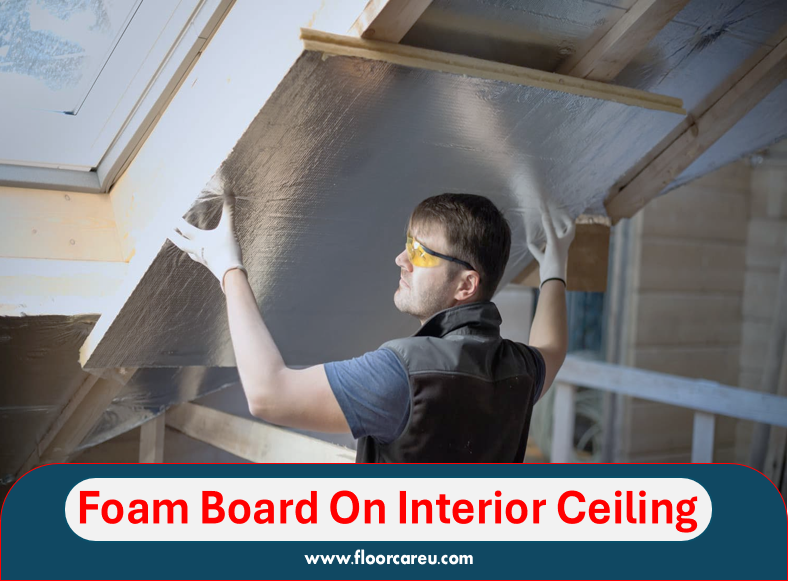
Safety And Regulations
Regarding safety and regulations, it’s vital to use foam boards on interior ceilings in compliance with local building codes. Proper installation and adherence to safety guidelines are crucial to ensure the structural integrity of the ceiling and the safety of occupants.
Insulating the ceiling with foam boards can provide energy efficiency and temperature regulation benefits, but it’s essential to follow best practices for a safe and compliant installation.
When installed on interior ceilings, foam board insulation offers several benefits, such as improved energy efficiency and sound insulation. However, it’s crucial to adhere to safety guidelines and regulations to ensure the project is executed appropriately. From fire safety precautions to building codes and permits, here’s what you need to know when using foam board on an interior ceiling.
Fire Safety Precautions
When using foam board on interior ceilings, fire safety is a critical consideration. To minimize the risk of fire hazards, ensure that the chosen foam board insulation complies with fire safety standards and regulations. Additionally, consider installing fire-resistant barriers or coatings to enhance the overall fire safety of the installation.
Building Codes And Permits
Before incorporating foam board insulation into your interior ceiling, it’s essential to familiarize yourself with the local building codes and permit requirements. Ensure that the installation complies with all relevant codes and standards to avoid any legal or safety issues. The project may require obtaining the necessary permits before starting the installation, so it’s fundamental to investigate and adhere to the local regulations.
Summary
Incorporating foam board on an interior ceiling provides insulation benefits, but it’s important to prioritize safety and regulations. From fire safety precautions to compliance with building codes and permits, every step should align with appropriate standards to ensure a secure and lawful installation.
Cost Analysis
When considering the installation of foam boards on interior ceilings, it is crucial to assess the cost implications. This cost analysis delves into the expenses associated with utilizing foam board insulation for interior ceilings, focusing on brands and average room estimates.
Comparison Of Foam Board Brands
| Brand | Price | Retailer |
|---|---|---|
| ULINE | $473.75 | Amazon.com |
| ULINE | $182.50 | ULINE |
| … | … | … |
Total Cost Estimation For Average Room
- $29.97 – Decorative Ceiling Tiles
- $43.98 – Etsy – TalissaDecor
- $72.93 – Home Depot
- $18.97 -…
Maintenance And Repairs
Proper maintenance and timely repairs are essential to ensuring the longevity and efficiency of foam boards on interior ceilings. By following cleaning and upkeep tips and knowing how to address common issues and fix them, you can effectively preserve the quality of your interior ceiling.
Cleaning And Upkeep Tips
- Regularly dust the foam board ceiling using a soft brush or vacuum cleaner to prevent dirt and debris from accumulating.
- Avoid using harsh chemicals or abrasive materials when cleaning to prevent damage to the foam board surface.
- Inspect the ceiling for any signs of water leaks or moisture, as excess moisture can lead to mold growth on the foam board.
Common Issues And How To Fix Them
- Issue: Water Stains
- Fix: Identify and repair the source of the leak, then clean the stained area with a mild detergent and water solution.
- Issue: Dents or Scratches
- Fix: Use a foam-friendly filler to fill in any dents or scratches, then repaint or touch up the affected areas.
- Issue: Peeling Edges
- Fix: Apply an adhesive specifically designed for foam board to reattach any peeling edges securely.
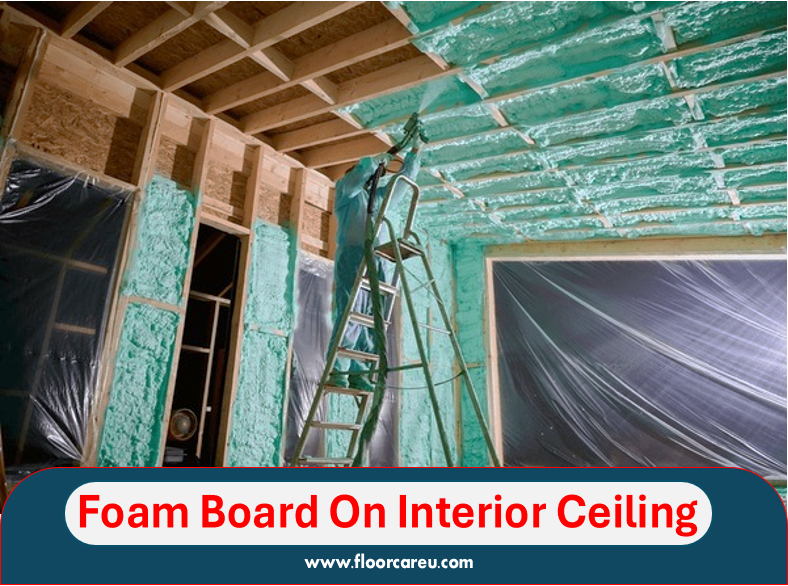
Frequently Asked Questions Of Foam Board On Interior Ceiling
Can You Use Foam Board On Ceiling?
Yes, you can use foam board on the ceiling for insulation and soundproofing purposes effectively.
Can I Put Insulation Foam On My Ceiling?
Foam board is a good option for adding insulation to your ceiling. It’s efficient thermal insulation.
Can You Insulate A Ceiling From The Inside?
Yes, you can insulate a ceiling from the inside using rigid foam insulation.
Is Foam Insulation Good For Ceilings?
Foam insulation is good for ceilings, especially for insulating cathedral and attic ceilings. It provides effective thermal insulation and helps maintain a comfortable temperature in your home. Additionally, spray foam is ideal for sealing air leaks and preventing energy loss.
Can You Use Foam Board On A Ceiling?
Yes, foam board can be used on ceilings as a form of insulation.
Is It A Bad Idea To Use Foam Board Insulation On Top Of Ceiling Joists?
Using foam board insulation on top of ceiling joists is not a recommended method as it may affect the structural integrity of the ceiling.
Conclusion
Foam board insulation is a versatile and cost-effective solution for improving interior ceiling insulation. By adding a layer of foam board, you can enhance energy efficiency, reduce heat loss, and create a more comfortable living space. With a variety of installation methods and materials available, foam board is a practical option for homeowners looking to upgrade their ceiling insulation.
Discover the benefits of foam board today and transform your home into a more energy-efficient and comfortable environment.
